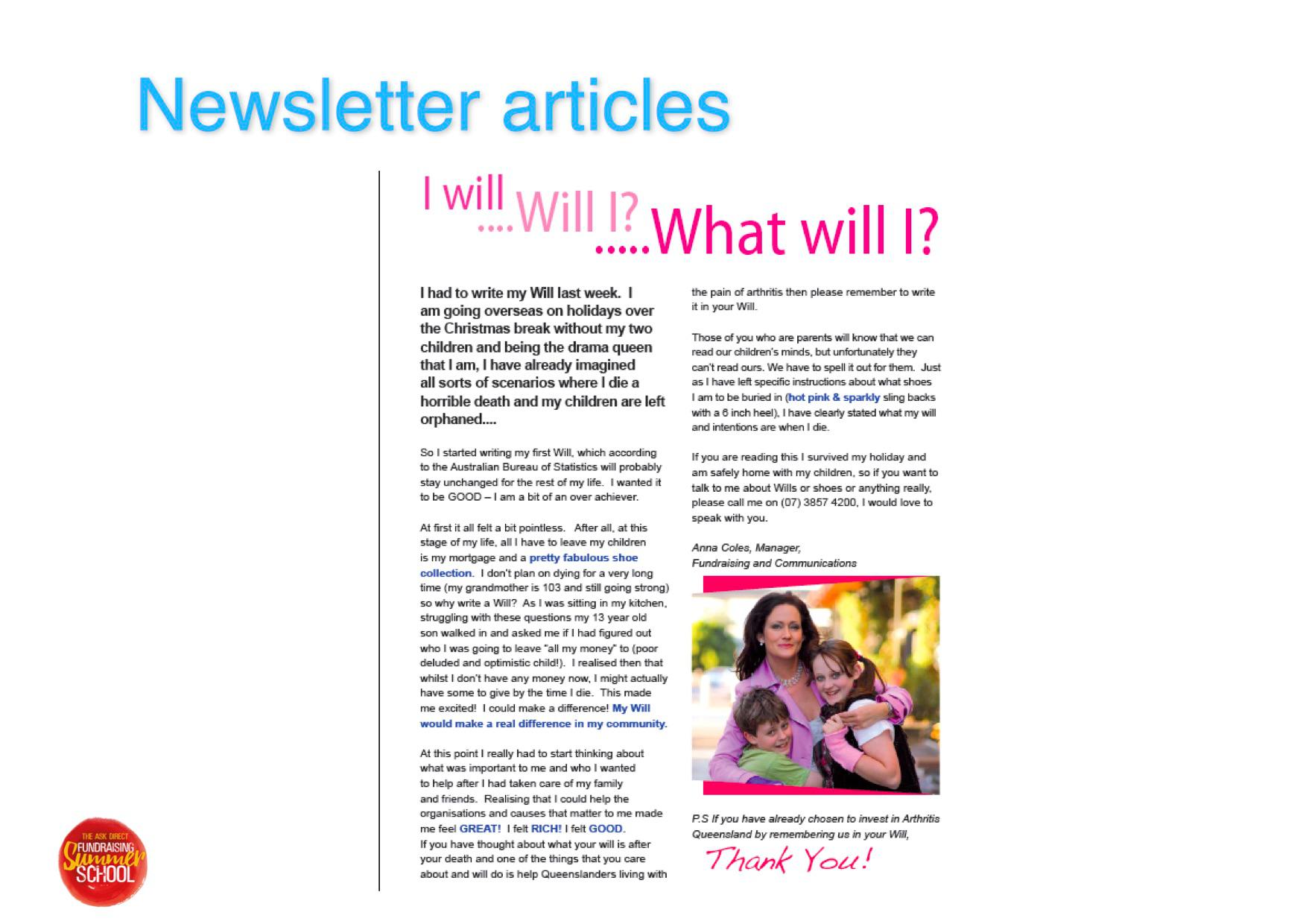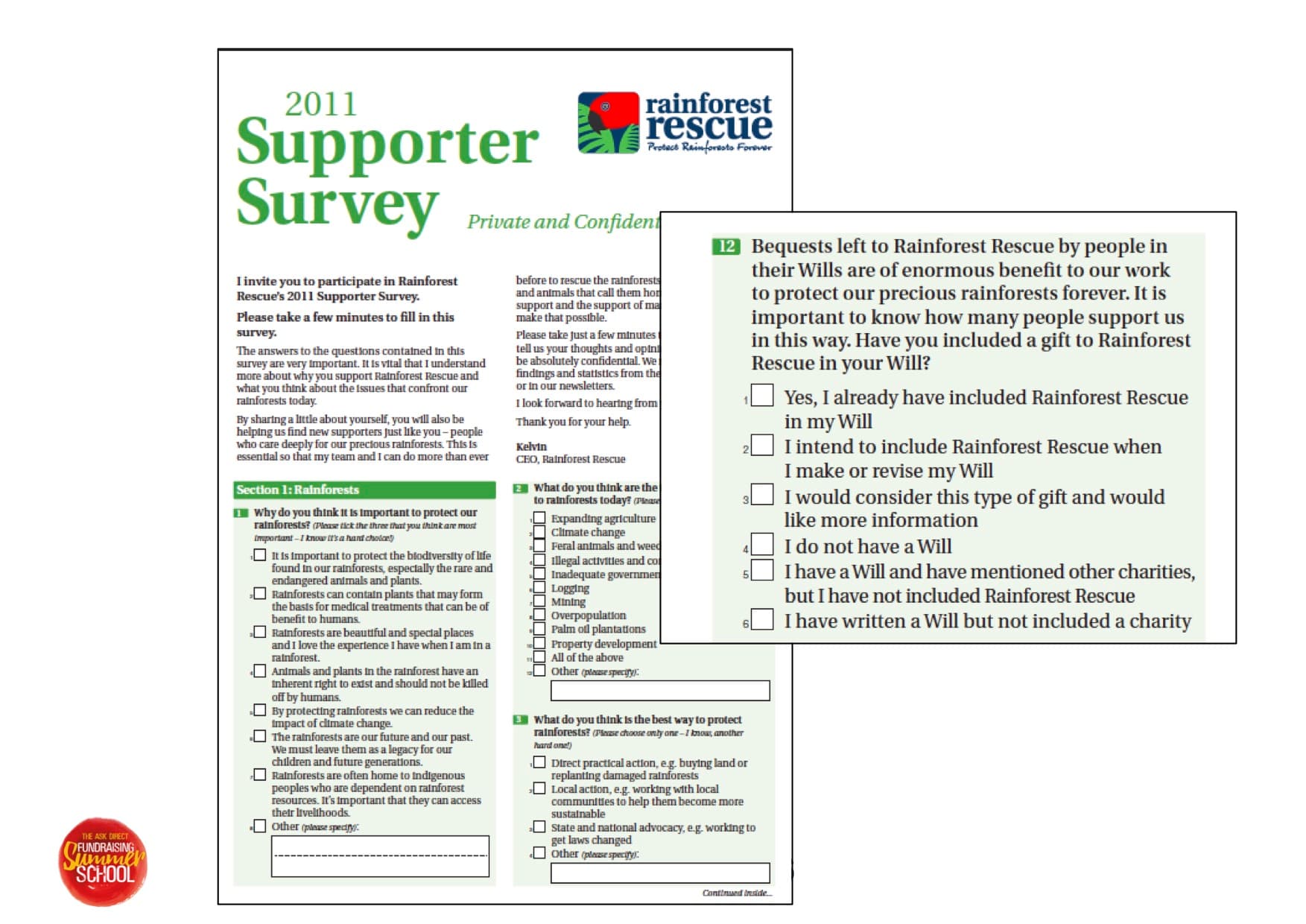Two days in Dublin: fundraising inspiration in Ireland’s capital – part two
SOFII’s four-part feature recording edited highlights from one of 2016’s best world-class fundraising conferences
- Written by
- Joe Burnett
- Added
- November 03, 2016
In this report we look at two sessions from Australia-based data and dm expert Sean Triner on mid-level donors and legacies and governance guru Simone Joyaux’s rallying cry for creating extraordinary experiences.
Sean Triner
From legacy leads to transformational impact: five steps to conversion
Sean Triner, made it clear right away: legacies are the pinnacle of giving, ‘the kings of the (fundraising) jungle’ yet too many charities ignore them .
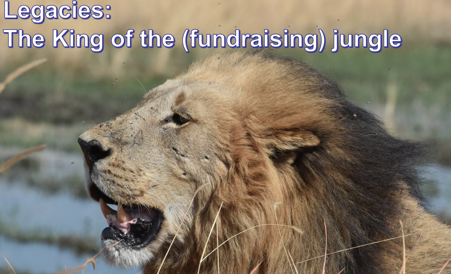
The immediate benefits from dedicating energy to the majestic beast that is legacy – or bequest – fundraising, can seem unclear, so Sean listed four compelling reasons why they should be a key target of any organisation that has, or plans to have, at least 3,000 donors:
- Long-term income.
- Financial sustainability.
- They’re an important part of a diversified fundraising strategy.
- They allow organisations to do even more good work.
The numbers he gave are compelling and best summed up by the chart below:
Average bequest by charity excluding gifts below $1,000
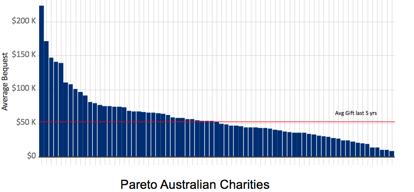
This means there are several charities in Australia (so it’s reasonable to assume something similar in the UK, the US, Canada and elsewhere) that, on average, receive over AU$ 100, 000 in legacy donations, with the median average settling somewhere in the region of AU$ 50,000.

Step one is to identify the right people as potential legacy donors. Data shows that it’s a small percentage of donors who give the largest part of donation income:

So promtion of legacies/bequests is crucial. But too often major gifts and legacy fundraisers don’t meet more than 30 individual donors, even though legacies can come from any of their loyal active cash and major donors – if they can be encouraged to think about leaving a legacy.
Sean pointed out that, between 2012 and 2015 in Australia, the largest number of new cash recruits came in via direct mail, so this should be the preferred means of solicitation, especially for legacy fundraisers. Again, this means maintaining appropriate contact with donors on the legacy theme.
New cash recruits by channel of solicitation

Sean also outlined some key facts about donors and legacies:
- They are twice as likely to put an organisation in their will if they have donated in the previous 12 months.
- They are much more likely to include an organisation in their will if they are frequent donors.
- High cash givers are more likely to put an organisation in their will.
- Generally, older people pledge more.
Your organisation should start to build a culture of bequests. You can help people become used to the idea by including information about bequests in your communications, such as newsletters, PSs in letters, or bequest inserts with receipt letters, plus talking about bequests at functions and events.
Example of a legacy feature from a newsletter:
Website example:
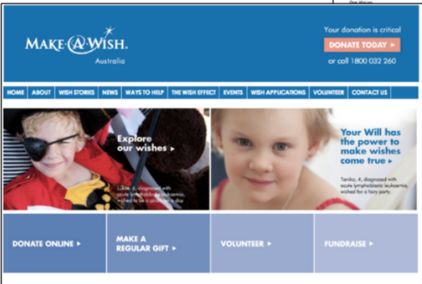
Sean stresses that the best tool in fundraising is direct mail, because it is a great vehicle for supporter surveys, which can include questions about legacies, as shown in this example from Rainforest Rescue:
Sean advises fundraisers to send a supporter survey every year, as the information they produce is really useful. It’s crucial to make surveys engaging and to use them as a means of learning how to communicate with donors. Note: surveys should be conducted in addition to direct mail appeals and newsletters.
If a donor has indicated in the survey that he or she might leave a legacy or would like more information on leaving a legacy, you should follow up with a letter (which is always preferable to e-mail), enclosing a legacies/bequest ‘pack’.
Sean outlined what a bequest pack should include:
- Ask for a legacy.
- Answer key questions: why it is so important that the donor puts you in his or her will? What will the donor’s legacy achieve?
- Tell stories: legacy testimonials and beneficiary stories.
- Provide useful information.
- Thank for both past support and for considering a legacy.
The next step is to telephone and arrange to visit the best prospects. Sean believes legacy officers should be out in the field and nowhere else. Charities must do everything to keep donors happy by sending donor care letters, inviting them to thank-you or show-and-tell functions and mailing them further appeals. His key words: ‘don’t ignore your donors’.
Sean’s was also clear about how valuable legacies can be for charities, once they know how to ask donors for them. Implementing his strategy could lead your organisation something missing?
All about mid-value donors
Echoing his earlier advice about legacies, Sean reminded us in his second session about the universality of the Pareto principle, named after an Italian academic who discovered that all customers are not equal – in fact, he found that in almost every area of commerce 20 per cent of customers will provide 80 per cent of sales and vice versa . In fundraising terms, this means that 20 per cent of donors will invariably give 80 per cent of donation income (and vice versa). It’s worth stressing. Under the Pareto principle, this means that just a few of your donors will give you the largest part of your income, and vice versa, as illustrated by the tables below: ‘Pareto squared’ refers to the phenomenon that if you apply the 80/20 rule to your top 20 percent segment, just four percent of your donor file will be shown to produce the bulk of your income.
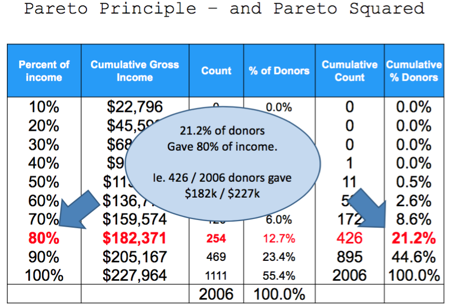
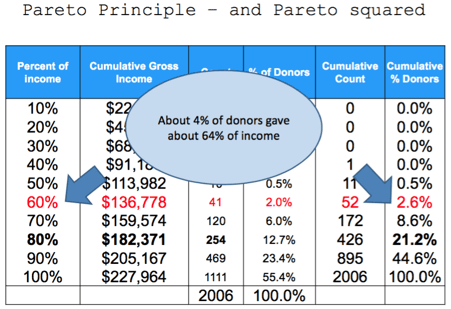
Which gives us a nifty definition of mid-value donors:
The easiest way to define major, mid-value and other donors

As with legacies, using data is crucial. Working from a survey of Australian charities (the fundraising benchmarking 2016 report), Sean extrapolated that mid-value donors will often start with a one-off dontation, but with good practice this can be built on to lead to major gifts and legacies (bequests). Which is why he again emphasised the need to concentrate on major donors, with a handy tip for each fundraiser to try and visit around 500 donors where possible. Your database and the Pareto principle should help you to prioritise who to visit!
The big growth potential
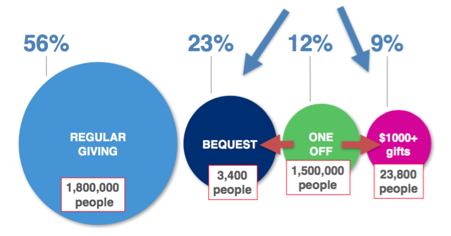
Example: integrating direct mail with bequests and major donors
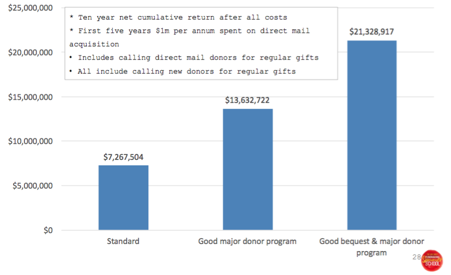
The key to building these relationships is to develop an effective direct mail strategy as a foundation for visits and telephone calls. Visiting and phoning, Sean said, will only reach 20 to 35 per cent of people. Direct mail reaches the remaining 65 to 80 per cent, but is only effective if the packs are top quality. As he said, ‘spend more per pack to make a better communication that gets through to the donor. And personalise it throughout’.

Another crucial aspect is to treat mid-level donors and above as VIPs. With the value they provide to your organisation, it is essential that they are given special treatment.
How can we build better relationships straight away?

Finally, Sean provided advice on how to budget to make all of the above a success:
Budget – ideal versus reality
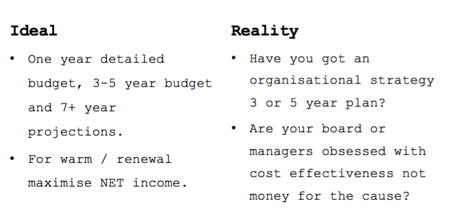
If the cost of fundraising is low, Sean says, that means the organisation is not reaching enough people. It’s crucial to optimise data to establish the fundraising budget, to manage resources effectively, outsourcing where needed. Fundraising is an investment, not a cost and should be viewed as such.
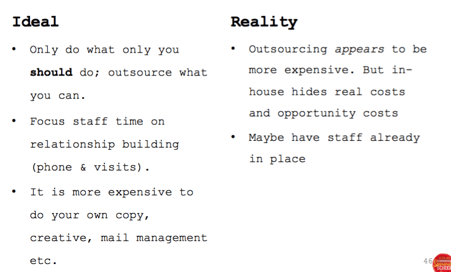
Sean’s two presentations on legacies and mid-value donors tied neatly in with one another. Mid-value donors should be key assets to all charities; the rewards can be considerable just by focusing on this small(er) demographic. The key is to use data and communications correctly, with the former feeding the latter and to make these donors feel important. Once you have that strategy in place, you can then build on it to achieve the goal of getting more legacies.
Simone Joyaux
Creating extraordinary experiences for your donors
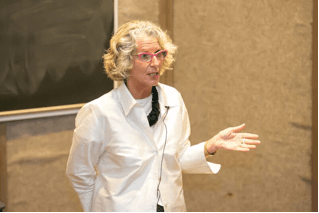
In what is quite rare nowadays, Simone Joyaux’s workshop was conducted without the use of slides and was the most interactive event of the two days. The holy grail of fundraising is loyalty, she said, so the key for fundraisers is to create experiences that encourage donor retention.
Simone presented two equations for this journey:
- Loyalty means a comprehensive relationship-building programme and a donor-centred NGO.
- Comprehensive relationship-building means donor-centred communications and extraordinary experiences.
After all, she pointed out, seven out of 10 first time donors don’t give again, yet too often fundraisers (and their organisations) don’t focus on donor loyalty, even though it costs 10 times more money to acquire a new donor than to retain an existing one. In essence, excessive focus on acquisition distracts from the holy grail.
Echoing what Sean Triner had said earlier, Simone pointed out that if bequests are the ultimate gift from donors, then the most likely people to give one are loyal donors. And yes, it’s true that not all donors want a relationship with an organisation, but more do than we currently engage with; some may want to but don’t realise it yet. ‘Your NGO must offer enough extraordinary experiences, providing the opportunity for donors – should they so choose – to engage more with the organisation and the cause.’
The first step is to have internal conversations, asking yourselves what customer-centred communications mean. If the right question is asked, organisations can generate a conversation that helps produce change. Central to this process, Simone emphasised, should be the leaders of the organisation: it is their duty to engage staff, board members and volunteers in this work.
As we don’t know the hearts and finances of our donors, we need to give them experiences. These have to be regular to fight the seven out of 10 drop off and preferably done by board members. Simone gave a few tips to enable this:
- Conduct focus groups with donors.
- A call from a board member.
- Just say ‘hi’ and don’t persistently ask them for money.
- Get their stories on why they give.
- Conduct donor satisfaction surveys.
A key ingredient to creating extraordinary experiences is emotion, according to Simone. Quoting Carl Jung, she said ‘there can be no transforming […] of apathy into movement without emotion’. Neuroscience shows that the human brain can process emotional input without cognitive processing, so the most effective ads should contain more than twice as much emotional content as rational content.
Surprisingly perhaps, she identified flattery as a technique that works really well. Research shows that even perceived insincere flattery can still leave ‘a lasting and positive impression on the listener’. Just as counterintuitive, perhaps, is that ‘negative emotion is better received than positive’, because people process negative emotions, (eg anger, fear, envy, despair) more easily than positive ones (happiness, gratitude, hope). Likewise, the threat of loss is more motivating than the promise of gain.
Working within these emotions, a charity can become ‘…the conduit to achieve the donor’s desires. Help your donors dream and by engaging those who wish to be engaged, create a tribe’, Simone asserted. It’s essential, she said, to make your donors feel special by telling them that they’re essential to your organisation’s impact. So tell stories about their own impact and share special information with them.
Simone rounded up by asking: ‘do you and I – and our NGOs – really care about donors or are they merely a means to support a mission?’. If the former, as it should be, then your organisation needs to be having conversations with your donors, especially face-to-face, asking their opinions and listening to their stories, even sharing these stories at events or in videos on your website. Invite your donors and beneficiaries to talk to each other. Invite your donors to talk to each other. All of this combined will create an environment where extraordinary experiences for donors can develop.
After Mark Phillips’ opening dose of reality and call for new ways of behaving, Sean and Simone’s presentations got into the logistics and strategies of how to develop effective campaigns. In our next report, we’ll be covering the eye-opening panel debate on the gender imbalances in fundraising and Beate Sørum’s advice on how to build a top-class website.



